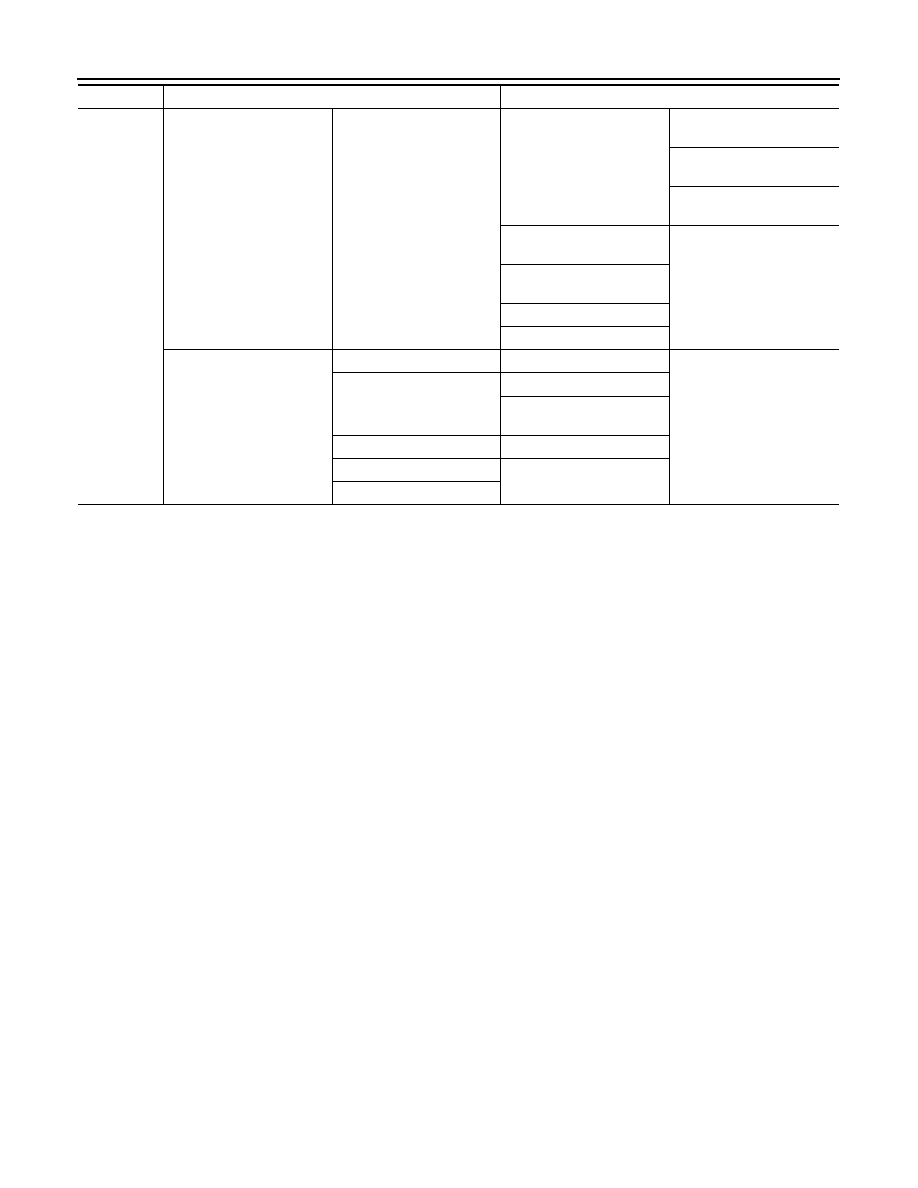Nissan March K13. Manual - part 61

CO-8
< SYMPTOM DIAGNOSIS >
[HR12DE]
OVERHEATING CAUSE ANALYSIS
Except cool-
ing system
parts mal-
function
—
Overload on engine
Abusive driving
High engine rpm under no
load
Driving in low gear for ex-
tended time
Driving at extremely high
speed
Power train system mal-
function
—
Installed improper size
wheels and tires
Dragging brakes
Improper ignition timing
Blocked or restricted air
flow
Blocked bumper
—
—
Blocked radiator grille
Installed car brassiere
Mud contamination or paper
clogging
Blocked radiator
—
Blocked condenser
Blocked air flow
Installed large fog lamp
Symptom
Check items